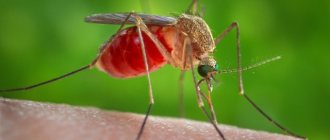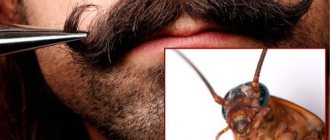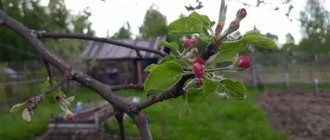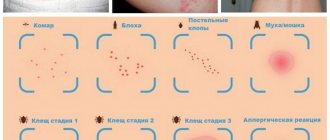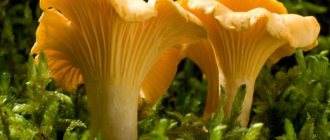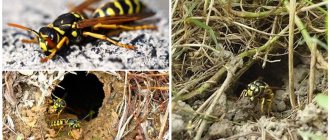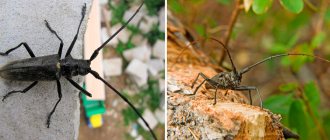The little midge is vile. Description of insects, habitat, characteristics of species, danger to humans. Can a midge bite? Why are blood-sucking bites dangerous? What actions need to be taken after a midge attack. How to prevent the development of serious consequences. Tips and tricks.
If you are planning to go to the forest to pick mushrooms, berries, or hunt, you need to be prepared for anything. You may have to spend the night in the forest, or you may meet a forest predator. In addition, there is a risk of being bitten by midges.
Below we will tell you what types of midges can attack you, what dangers can warn you when bitten, how to provide first aid and protect yourself with folk remedies and chemicals.
What is gnus
The midge is a small insect whose characteristics include the ability to mass attack a person or animal to consume blood. This species includes insects such as:
- mosquitoes;
- midges;
- horseflies;
- biting midges;
- mosquitoes.
In addition, the vile complex includes blood-sucking flies - tsetse, autumn flies. The presented species of parasites are found in different regions, regardless of climate - tundra, desert, temperate and tropical forests. In the photo you can see what they look like.
The maximum number of aggressive midges is concentrated in Siberia and Karelia. It is in these regions that the reason for the extinction of farm livestock (in the number of many thousands) and the cessation of logging-type enterprises lies in small blood-sucking insects.
Blood-sucking dipterans as carriers of pathogens of vector-borne diseases
The significance of the midge is not limited to the toxic effect of mass injections of mosquitoes, midges, midges, horse flies, flies, etc. The matter is complicated by the fact that among the insects that make up the midge, there are many carriers of pathogens of ultraviral, bacterial and parasitic human diseases.
If the midge fully exhibits its toxic effect when a more or less significant number of blood-sucking insects attack a person, then the bite of several or even one instance of the carrier is sufficient to transmit the causative agent of a particular disease to him.
This circumstance reinforces the need to protect people from vileness and fight the latter. One circumstance should be noted: the midges exhibit their toxic properties wherever many blood-sucking insects hatch, and always during the breeding season. Transmission of pathogens of vector-borne human diseases by carriers from among flying blood-sucking dipteran insects can occur only in certain territories within the geographical limits of the spread of this disease.
Let us consider the importance of blood-sucking flying insects as carriers of pathogens of vector-borne human diseases.
Let's start with the most famous insects for all - mosquitoes.
Mosquito
The mosquito is one of the most common insects, which are classified as blood-sucking insects. Their number is more than 3 thousand species. The favorite places of mosquitoes are places characterized by high levels of humidity, as well as areas where there are stagnant bodies of water.
Such conditions are perfect for female mosquitoes to lay eggs, as well as for the full and unhindered development of their offspring.
Mosquito activity begins in May and lasts until September-October. Since the larvae of these pests are able to tolerate winter cold well, they can easily continue to actively develop and reproduce with the onset of spring.
Male mosquitoes eat plant foods, but females cannot reproduce without blood. Note that this type of insect is a carrier of dangerous infections, including yellow fever and malaria.
Midge
The midge is a small midge, characterized by high numbers. The taiga region alone has more than 1.9 thousand species of midges. Midges develop within an aquatic environment, which is why they are not found in dry, desert areas.
Most often, midges accumulate near open bodies of water, swampy meadows, and forests. It is almost impossible to find midges in well-ventilated areas and dry climates.
In appearance, the midge is a small parasite whose body length does not exceed four to five millimeters. Females eat human or animal blood.
When bitten, the skin is gnawed, which causes the person to experience rather unpleasant painful sensations and swelling may occur. Swelling as a result of a bite can be observed for several days. Moreover, bites are often accompanied by an allergic reaction.
The blood-sucking pest can act as a carrier of diseases that lead to death - plague, anthrax, tularemia.
Horseflies
Today, more than 5 thousand species of blood-sucking parasites such as horse flies are known, and 500 are found in Russia. For habitat they choose fresh water bodies, forests, and fields. Most often, they accumulate in large quantities in places where cattle graze.
The most common types of horseflies are parasites such as lacewings, rainflies, and bullflies.
In appearance, the horsefly resembles a large fly. The bite is carried out through a proboscis, with which the parasite pierces the skin of people or warm-blooded animals, while it injects a substance that stops blood clotting.
As a result, the wound after the bite is accompanied by prolonged pain and bleeding. Severe swelling, redness, and burning are also observed.
Mokretsy
Midges are small mosquitoes, their length reaches no more than 1-4 millimeters. In total, there are approximately 4 thousand species of biting midges, 500 of them live in Russia.
The female lays eggs and offspring on top of leaves and stems that grow from moist soil, sand, in forests, and near the shores of reservoirs (both fresh and salt). Both sexes of insects consume the blood of humans, a warm-blooded animal, as food.
When bitten, a substance with toxic components is injected, which causes the victim to experience severe allergies, pain, itching, and burning.
Mosquitoes and dengue fever
The presence in our fauna of such a potentially dangerous species as Aedes aegypti should be the subject of close attention of epidemiologists and parasitologists, especially since this type of mosquito is a carrier of another viral disease called dengue fever.
It gives outbreaks of epidemics in Asia Minor, Syria, the Aegean Islands, Greece and in various places in the tropics and subtropics of the Old and New Worlds. Dengue is a benign febrile disease with an erythematous rash and pain in the joints and muscles. Mortality rate - 0.1%.
Dengue produces large outbreaks easily and quickly, which increases its social significance. In 1922 it covered a railroad line in Texas; There were up to 600,000 patients. In 1928, a dengue epidemic broke out in Greece. There were about three-quarters of a million sick; 1210 people died, of which 1065 deaths occurred in Athens and Piraeus. The carrier of the causative agent of this disease is Ayo mosquitoes. aegypti (possibly other types of mosquitoes). This, obviously, explains the predominant spread of dengue fever along river banks, valleys and deltas. Its closest center to the USSR is the city of Trebizond. In view of the possibility of importing with ships and other vessels infected with Ae. aegypti to the south of the USSR, in 1929 there was a fear of the importation of dengue fever; this fear prompted the development and implementation of some preventive measures (see Russian Journal of Tropical Med., 1929, No. 3). There are no known cases of dengue in the USSR, but there is a possible carrier of this disease.
Mosquitoes
The mosquito is another species of midge that lives in tropical and subtropical climates, but is very rarely found in temperate climates. They are small in size, approximately 3-4 millimeters in length. They are characterized by slow movement and fly silently. Activation takes place at night.
Male mosquitoes consume plant nectar, but females must receive blood to be able to lay eggs.
A mosquito bite is accompanied by symptoms such as burning, itching, rashes, and painful pustules appear.
Varieties
More detailed information about the different categories of insects that are included in the group “gnuses” is given below.
Mosquitoes
When the question arises about what a midge is, the very first species that comes to mind is mosquitoes. The most dangerous among them are females, since they are the ones who strive to drink the blood of warm-blooded animals, while males are able to make do with plant sap.
Mosquitoes can feed on the blood of a person who is suffering from an infectious disease, and when they bite another person, they can introduce the resulting pathogen of this disease into his blood through the saliva that they secrete. Therefore, such vileness is especially dangerous. A photo of the mosquito is shown below.
This species of midge has 4 stages of development: egg, larva, pupa and adult insect. It is the last stage that poses a danger to warm-blooded animals, since it is this stage that shows interest in someone else’s blood.
A female mosquito can live up to 40 days.
The table below shows the main types of mosquitoes, as well as their habitats.
| Species name | Habitat |
| Squeaker mosquito | Lives everywhere. |
| Kusaka two-lane | It lives mainly in forest areas of the Tundra. |
| Malaria vulgaris | Europe (except Tundra). |
Horseflies
The largest among all gnats, reaching up to 30 mm in size. They have huge, bright eyes and, despite their name, they have excellent eyesight. Like mosquitoes, only females drink the blood of warm-blooded mosquitoes. They are most often found in hot seasons, when there is muggy weather and an abundance of sun.
Horseflies bite painfully, and swelling may occur, since their saliva contains substances that have a bad effect on the body of a warm-blooded animal. The stages of development are the same as those of mosquitoes.
Photo of horsefly:
The table below shows the main types of horseflies, as well as their habitats.
| Species name | Habitat |
| Deer | Found everywhere |
| Midday | This vile species is often found in Taiga or in the European part of the Russian Federation |
| Forest lacewing | Eurasia |
| Ordinary raincoat | Eurasia, Africa, North America |
Midge
A very unpleasant type of midge that quietly injects an anesthetic substance, thanks to which the warm-blooded midge does not notice the bite, but after the midge gets drunk, the bite site begins to burn, the pain is much stronger than from other types of midge.
The table below shows the main types of midges, as well as their habitats.
| Species name | Habitat |
| Odagmia spotted | Europe, Siberia |
| River | Europe, Siberia |
Mokrets
The smallest of all gnats. May be less than 1 mm in size. They are very similar to midges in appearance, so they are often confused.
Mostly found are the Burning Midge. It lives in places with high humidity, near ponds or large puddles. Often found in swamps. It bites very painfully, the bite site burns severely. Distributed in areas outside tropical Eurasia.
Blood-sucking flies
Blood-sucking flies live in the North and other regions. In appearance they resemble an ordinary housefly, but they use animal blood as food. Among the most common varieties is the autumn fly.
The parasite's oral apparatus has a special proboscis, distinguished by the presence of sharp serrations, with the help of which skin is torn off and blood is consumed. When a fly bites, it releases poison, which poses a risk of severe allergic reactions, itching, burning, and infection.
Both males and females consume blood. They can carry such dangerous diseases as tularemia, anthrax - depending on the species. their activity is observed from September to October.
The approximate lifespan of midges depends on the species and ranges from 3 days (midge) to 12 weeks (mosquito).
Consequences of a vile attack
These types of insects bite every exposed part on the body. Most often, they pay attention to the arms, legs, and face. Initially, a person will not feel any pain, since the vile saliva contains anesthetic substances.
After this, the victim experiences the following symptoms (table):
| Type of symptom | How it manifests itself |
| Primary symptoms | Severe burning and itching Redness at the site of the bite Pinpoint wounds are located in a chaotic manner (even a detailed examination does not reveal the possibility of a midge bite) Swelling of tissues (in case of a midge bite near the eyes, there is a risk of swelling of the entire face) The appearance of cancer, blisters in the affected areas |
| General symptoms | Enlarged lymph nodes Increase in temperature (up to 39 degrees) Change in blood pressure Increased heart rate The appearance of purulent inflammation on the skin |
Allergic reactions to midge bites occur due to the fact that saliva contains hemolyzing substances of a protein nature. Children may experience more severe initial symptoms than adults.
This can be explained as follows: when itching occurs, children try to remove the symptom by scratching. Because of this, an unpleasant result occurs in the form of increased swelling - the wound becomes infected with pathogenic microbes, which leads to a long healing process of the skin.
Rarely, the most dangerous consequence of a midge bite may occur - anaphylactic shock. Harm also manifests itself in the risk of being harmed by a blood-sucking insect that carries a dangerous infection.
The midge was the cause of the plague epidemic no less than the rat. The risk of infection is small, but still, it exists if you consume the blood of a sick animal, and then a person.
Consequences and complications
It would seem that a midge has bitten an adult or a child, the bite site will hurt a little and everything will go away. Should I be worried about this? Let's start with the fact that the first insect bite in life can go unnoticed, without causing dangerous symptoms, but this is not an indicator that a wider symptom complex will not appear in the future. One has only to remember the pathogenesis of allergic reactions to a midge bite.
The danger of subsequent reactions will be determined by the severity of the symptoms and the reaction to them on the part of the victim. For example, a small red itchy dot at the site of a bite can easily turn into a large wound, which can subsequently begin to fester if the bite site is carefully scratched, which is often done by children who find it difficult to tolerate the itching. In addition, a child, unlike an adult, does not yet understand the full danger of infection in a wound.
And even if the skin at the site of the bite was clean, and the hands were washed thoroughly before scratching, such manipulations will help increase the size of the wound and facilitate access to opportunistic microorganisms, which are almost always present on the body. How many of us cover up a scratched wound?
But infection of the bite site is not the only complication. High-intensity allergic reactions are also dangerous, especially if they continue for a long time, increasing intoxication of the body. It is difficult to definitively answer the question of how long the swelling from a midge bite goes away. After all, for some people it may not occur at all, others suffer discomfort for only 1-2 days, and for others, swelling appears only the next day and only intensifies with time. There are also instant allergic reactions when the bite site literally swells before our eyes.
But what can be said for sure is that long-term edema syndrome poses a certain danger. Thus, swelling in the legs from a midge bite, which does not subside for a long time, can cause disturbances in peripheral circulation, and swelling of the face and throat becomes a risk factor for suffocation and hypoxia.
A strong increase in temperature is also dangerous in this regard, because this increases the viscosity of the blood and makes it harder for the heart to work. And what can we say about anaphylactic reactions, which pose a great threat to human life, regardless of the age of the victim. If a person is not provided with qualified emergency care, he may soon die.
We must not forget the fact that a midge bite is a risk factor for contracting some bacterial, viral and parasitic infections, especially considering the fact that an insect can bite several people and animals in a day. For example, epidemics of visceral leishmaniasis - a parasitic disease with a fatal outcome in the absence of appropriate treatment - in the tropics and subtropics are associated precisely with midge bites.
It turns out that the bite of such a small bloodsucker as a midge can pose a threat to human life and health, so you should not treat this situation with the usual carelessness.
midge bite
The bites of such insects pose a serious danger to people and animals. Their saliva contains toxic components, which, when released into the victim’s blood, provoke severe itching, burning, inflammation and redness of the skin tissue.
It is worth remembering that a bite can cause allergic reactions, which can lead to complications. In such cases, the development of Quincke's edema and anaphylactic shock is possible.
Therefore, insect attacks should be taken seriously and the necessary measures should be taken to prevent complications that pose a danger not only to human health, but also to life.
Elimination of swelling in the eyes
There may be situations where the midge bites in the eye area. This results in swelling of the upper eyelid, but it is also possible for the swelling to spread down the entire face. In addition to swelling, a person is bothered by severe pain, it seems that there is a foreign body in the eye, and the eye is very watery.
When a person experiences these symptoms, the following measures should be taken:
- Rinse the affected area with plenty of cold water.
- Apply a cold compress.
- Take any antihistamine, for example, Suprastin, Claritin, Fenistil drops, be sure to follow the dosage.
- Use eyelid ointment.
Use the ointment with extreme caution so that the drug does not get into the eye or mucous membranes; apply a thin layer to the eyelid. You can use ointments such as Nezulin, Fenistil, Psilo-balm.
If the swelling is too severe, your doctor will likely recommend using hormonal ointments, such as hydrocortisone or prednisolone. But remember, in this case you cannot self-medicate, since you can harm yourself even more; seeing a doctor is a mandatory procedure.
When swelling is accompanied by severe pain, you can take painkillers. It is recommended to take paracetamol or ibuprofen, as they have an anti-inflammatory effect.
Remember that it is prohibited to use creams, ointments, solutions for wiping or compresses that contain alcohol or vinegar, since these substances penetrate through thin skin, which leads to irritation and aggravates the situation.
How to avoid midge bites
Midges bite unnoticed and it is not always possible to feel their bite, so if you know that you are going to travel to nature or to the country, be sure to take precautions:
- Don't wear perfume. This attracts midges.
- Dress to show as little skin as possible.
- It is better to wear clothes made from natural fabrics.
- Apply products that repel midges. Please read the instructions before applying.
- The smell of food also attracts pests. When you sit down to eat, be sure to cover as much of your body as possible with clothing.
If you live in an apartment or house, you can also become victims of midges.
This is where electric fumigators will come to your aid.
If you take all protective measures, then you will not be afraid of any pests and the summer will pass 100%.
Treatment of a mosquito bite
In order to prevent complications and relieve unpleasant symptoms from bites, treatment should be started immediately. Quite effective folk remedies that help reduce swelling, relieve itching, burning and pain.
To treat the affected area, you can prepare the following solutions:
- Mix ammonia and water in equal quantities.
- Take 1 glass of water and add ½ teaspoon of soda, stir thoroughly until completely dissolved.
- Take a glass of water and add ½ teaspoon each of salt and soda, stir thoroughly until completely dissolved.
These solutions should be used as follows: moisten cotton wool or a bandage in the solution, then apply to the affected area for 10-15 minutes.
To get rid of wounds, you can use calendula tincture, onion or lemon juice, mint, parsley, plantain, dandelion leaves, crushed cabbage leaves, and potato juice.
Now you can buy special ointments, creams, gels, of which there is a wide range on sale. These products have anti-allergenic, anti-inflammatory, anti-edematous effects. They help relieve itching, swelling and redness.
These drugs include:
- Trimistin.
- Hydrocortisone.
- Fenistil gel.
- Psilobalm.
- Levomekol.
- Tetracycline.
When a child is attacked by midges, the affected area must be covered with a clean, sterile bandage. Since the wounds are very itchy, a child can scratch it, and this can lead to bacteria. Also, during a blood-sucking attack, it is recommended to take an antihistamine, for example, Tavegil, Suprastin, Claritin.
Remember that if you experience severe symptoms that cause discomfort or pain, be sure to consult a doctor. The specialist will give directions for the necessary tests and prescribe effective, and most importantly safe, treatment. There is always a risk of developing a severe allergic reaction.
What are the dangers of midge bites for humans?
After a midge bite, most people experience a standard reaction that lasts quite a long time, but when therapeutic measures are taken, it goes away without any consequences for the victim’s health. In some cases, an attack by this insect can cause such a dangerous phenomenon as an allergy, which, if the symptoms are ignored, untimely or improperly treated, can lead to death.
Normal reaction: how does it manifest itself, how long does it last?
Midges bite in all parts of the body without exception. They don't have favorite places. A bite from a midge can affect the leg, arm, face, stomach, and back. Most often, it is the limbs that are affected - the most exposed parts of the body. At the time of the attack, the victim does not feel any discomfort, because the saliva of these insects contains an anesthetic.
Severe redness, pain, itching, burning and swelling, in the center of which you can see a red dot, appear later. Depending on your immunity, the first signs may appear within 10–20 minutes or after a few days. Possible increase in body temperature.
The severity of the symptoms that appear after a child or adult is bitten by a midge depends on many factors:
- number of attacked insects;
- state of the immune system;
- age of the person bitten;
- predisposition to allergic reactions.
What causes this body reaction to the bite of this insect? Redness, swelling and acute pain are associated with the fact that midge saliva, in addition to the analgesic component, contains:
- an anticoagulant secretion that blocks the functioning of the coagulation system, so that the pest has time to feed on blood;
- a hemolytic toxic substance that causes redness and swelling of the skin;
- histamines;
- enzymes.
The swelling from a midge bite is much more extensive than from a mosquito bite, and accordingly, the pain is more pronounced. This is due to the fact that during an attack, the mosquito cuts the skin, injecting saliva into the wound, causing bleeding, while the mosquito pierces the flesh with a thin proboscis, sucking blood from a capillary vessel.
Manifestations of allergies
Enzymes contained in the saliva of these insects, if they enter the wound during a bite, can provoke the development of a severe allergic reaction—simulidotoxicosis. When, for example, the leg is swollen after an insect bite, the affected area itches, hurts and itches, but in general the condition of the bitten person is satisfactory - there is no need to worry, you just need to observe the victim. The following symptoms indicating the development of an allergy require immediate treatment measures:
- Severe itching, burning, intradermal hemorrhage, swelling and redness, tending to worsen.
- Signs of general intoxication of the body, appearing 3–5 hours after a midge attack: a sudden increase in body temperature to 38–39°C, severe chills, weakness, muscle, joint and headaches, impaired breathing and heart rhythm.
- Inflammation of the lymph nodes. The lymph nodes become inflamed after 5–8 hours, the time depends on the number of bites and the individual characteristics of the body. This condition can last up to 14 days.
As allergies develop, anaphylactic shock may occur. The listed symptoms cannot be ignored. In severe cases, inaction can cause the death of the victim. If one of the family members was bitten by a midge, after which he began to lose consciousness and become delirious, he must be immediately taken to the nearest medical facility. In this situation, every minute matters.
First aid for a tumor
In order to prevent re-infection, as well as to prevent inflammatory processes, after an attack by midges, the affected area must be treated. Antiseptic agents can eliminate severe itching.
But before you get rid of the itching, you should resort to the following actions:
- At the first stage, you should wash the wound under running water, you can use antibacterial soap.
- Redness indicates an inflammatory process; antiseptic agents should be used. This can include products that contain alcohol, calendula, or citrus juice. If the attack occurred in nature and it is not possible to use any drugs, at the first stage you can wash the wound with your own saliva.
- Swelling and puffiness must be eliminated with cold compresses and ice.
- Now there are a large number of ointments, balms, creams that can relieve swelling.
- You can also use tincture of valerian and motherwort to treat the affected areas.
If these actions do not bring results, be sure to contact a doctor who will prescribe effective treatment.
How to get rid of a pest
There is no way to completely get rid of small blood suckers. These are inhabitants of wild nature who prefer areas near rivers and lakes, forests, fields, and the banks of swamps. But you can protect yourself from the attacks of these small pests.
If you are planning a trip to nature, where this blood-sucking midge most likely lives, you can use a special Antignus suit. Of course, you should use clothing that protects your body as much as possible.
This is a jacket with long sleeves and tight cuffs, a thick and tight collar, and tapered pants. To protect the head and faces, a hood and a mosquito net are used, but we all understand that such protective actions are relevant in the wild, and not in summer cottages and during outdoor recreation.
But in addition to clothing, which the midge cannot bite through, you can also use specialized products. When the holiday involves spending the night in a tent, a mosquito net is used, as well as specialized repellents. Nowadays you can buy a variety of repellents in the form of aerosols and creams.
Remember that when choosing a repellent, it is important to take into account what type of insect the drug is produced against. Also take into account age restrictions; special preparations are produced for children.
If we talk about the most popular products that have proven their effectiveness, it is worth noting Moskitol, Off, Taiga, Gardex, DEET.
Regarding folk remedies that make it possible to protect yourself from midges, one of the most effective is birch tar.
To do this, take birch tar and mix it with the same amount of sunflower oil, then use it as oil on open areas of the body. But remember that this product should be washed off with warm water 3-4 hours after application.
How to protect yourself from vileness
Clothing for nature (provides protection against ticks, mosquitoes and midges)
When going outdoors, you need to take care of protective equipment that can resist insect bites. After all, the effect of repellents is short-term, and they do not act on all types of midges. Therefore, the best protection will be clothing equipped with elastic, tight-fitting cuffs on the sleeves and legs, as well as a hood and a small mosquito net on the face, through which neither midges nor midges can penetrate.
If you plan to stay near bodies of water for a long time and spend the night in tents, you need to make sure that midges do not penetrate them. For this purpose, a protective small mosquito net is used. For greater effectiveness, it is either sprayed with repellents or impregnated with tar - birch or pine. You can also use a liquid tar-based composition, prepared by mixing 10 parts of tar with 5 parts of sodium hydroxide. The mesh is moistened with this composition and then dried by placing it in the shade.
Tent with mosquito net
But even after wearing a spacesuit, a person cannot completely protect himself from the penetration of insects. After all, your hands still remain unprotected, and a mosquito net on your face can cause discomfort. Therefore, if the midge does reach the flesh, the bite sites should be treated. The following means are used for this:
- ammonia mixed in equal parts with water;
- a solution of baking soda prepared from half a teaspoon of baking soda and a glass of water.
A swab soaked in one of these products is applied to the bite site for 10 minutes.
Calendula juice or tincture, onion and lemon juice, as well as mashed plantain, parsley, mint and bird cherry leaves help reduce redness and itching.
By taking all the necessary safety measures, you can, if not avoid bites, then at least reduce their number to a minimum.
Herbs and oils
Natural products that are also absolutely safe are very effective in combating symptoms.
Let's look at the most effective recipes that use aloe juice, plantain, basil and other natural products:
- Aloe. Aloe is very useful; if you have this medicinal plant, rest assured that it will prevent negative reactions to blood-sucking bites. You should cut the leaf and apply aloe pulp to the affected area. You can also use the juice of the plant; to do this, soak a cotton pad or a piece of bandage in it and apply it to the bite.
- Basil. We all know that this herb brings a lot of benefits to the body when used as food, but it will also save you from unpleasant symptoms, relieve inflammation, and eliminate itching and burning. To do this, take a few leaves and grind them into a paste, then apply it to the wound.
- Plantain. Everyone has been familiar with this plant since childhood; it was considered the remedy that would cure any wound. It is worth saying that plantain is truly a unique plant because it has anti-inflammatory and antiseptic effects, and also accelerates the healing process. You should take a leaf, grind it to a paste and apply it to the wound.
- Essential oils. In order to relieve swelling and get rid of itching, you should use lavender or tea tree essential oil. It is enough to apply a few drops to the affected area of the body.
Consequences after a midge bite
The reactions that can be caused by a bite are different.
A person who has never complained of allergic reactions may also suffer. Reactions are divided into local (itching, which is unbearable, redness and subsequent swelling, if the midge has bitten the lower limbs, the person’s gait may be difficult); general (high temperature, weakness in the body, headaches. And if you have a tendency to allergic reactions, then in this case the body may become covered with blisters not only in the affected areas of the skin).
The swelling itself may go away within a few days. But the itching may torment you for several weeks. Itching can develop into scratching, which will also take a long time to heal on your body.


